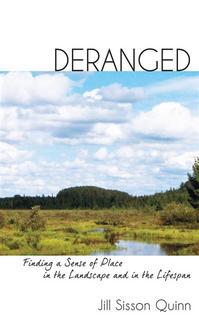Nature, science and memories collide in 'Deranged'

Published by Apprentice House.
Deranged is broken down into three sections: Egg, Nymph, Subimago. Childhood lessons, or ideas formed, mutate as she grows older and gains not only knowledge but also life experience. The paths are not obvious or linear; there is wandering as she oscillates between science and what she's trying to grasp, to discover, in herself.
Early in the book, she begins the essay A Theory of Everything with the statement "When I was a child, I could hear the sound of the earth turning." It is from this statement that she provides her childhood understanding — a jet streaking across the sky creates the sound and reverberations that equaled a turning of the earth for her. Later, she addresses the cosmological search for a theory of everything. Her essay goes back and forth between what scientists are pursuing and her own childhood memories — such as the above or witnessing molecules — concluding with a connection of the two disparate topics when she plays with her young niece.
In the essay Weeds Together, she writes of invasive species, both plants and animals, and points out that sometimes the invasive doesn't seem to us as such, because it has been an integral part of our lives. We have to discover that, in fact, the plant or insect was brought over by us centuries ago and is not indigenous. A sort of unlearning occurs, where we realize that what is taken for granted as a child was not always so.
As the book progresses, Quinn matures, and the reader follows her from childhood to adulthood. Quinn leaves her youthful landscape and must create a home in a new environment and, among other things, also confront her infertility. As this occurs, the reader is exposed to topics such as forest fragmentation, frozen frogs, the life support system of the Large Blue butterfly and Colony Collapse Disorder.
I happen to love the nature lessons, and what is also fascinating in these essays is the path she takes to arrive at her conclusion — it is definitely a route that is new for me and is eloquently written. It also reinforces something that I happen to believe: Discovery can be anywhere you want it to be.
Julia Eussen received her B.A. in English from Kansas State University. She is currently a graduate student in Eastern Michigan University's Professional Writing Program. She is also an active member of the Ann Arbor Classics Book Group and has recently begun to re-acquaint herself with good poetry. She can be reached at jeussen at emich dot com.

